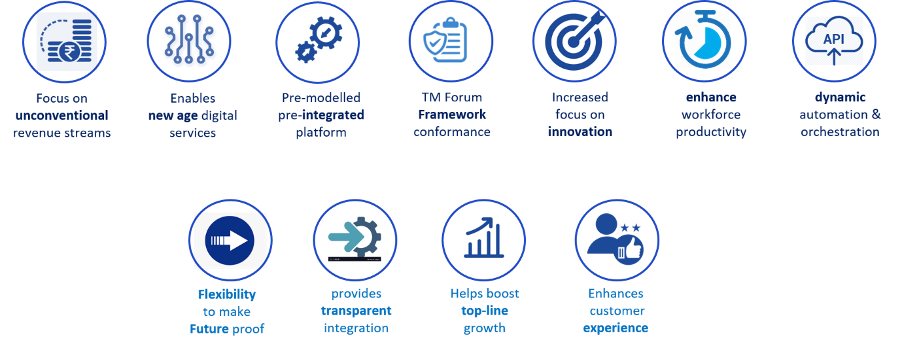We discuss the following topics in this blog:
- Unified FTTx Solutions
- Features of STL’s unified FTTx suite
- STL’s open integrated platform supported by an API-centric design
In addition to these topics, we shall also be answering the following FAQs:
- What is pFTTx?
- What is WiFi?
Contents
What is the Need for reliable FTTx?
Prime Minister of India in his Independence Day speech announced that 6 lakh Indian villages will have Optical Fibre connectivity within next 1000 days. The announcement leads to Government ensuring that 5G connectivity and high-speed Broadband Infrastructure reaches all Indians and they are not deprived of their Digital Dreams.
Moreover, many industry heavyweights across the globe have divested other businesses to focus on the fiber-optic market. Enthusiasm for gigabit broadband, and the high-speed data transmission it delivers, is due to the advantages of fiber over other communications technologies-virtually unlimited bandwidth, increased speed, reliability – to name a few.
The huge amount of funds for and advantages of optical technologies resulted in service providers scrambling to lay cable across India and throughout the world. But unlike a few years ago when simply having an optical network was a significant competitive advantage, communications service providers (CSPs) today realize that true competitive advantage comes from efficiently operating these networks.
To achieve greater efficiencies, CSPs must streamline their operations to reduce the amount of equipment required to service the market, reduce the number of people required to deliver these services, and reduce the time required to activate and troubleshoot network problems.
As part of these efforts, many CSPs are renewing their focus on the Business and operational support systems (B/OSSs) and, they are realizing that an efficient B/OSS is critical for gaining a competitive edge. Forward-looking CSPs are benefiting from the significant efficiencies that result from the introduction of today’s new generation of B/OSSs. These modern-day B/OSSs are yielding significant advantages due to the introduction of automated flow-through provisioning also known as zero touch provisioning.
Achieving zero touch provisioning requires the seamless coordination of activities across various software and hardware platforms, geographic locations, active and passive network equipment and communications technologies.
From a high level perspective, the operations can be viewed as three separate layers – namely, the business side, operational side, and the network or delivery side.

How FTTx Providers Would be Able to Automate Processes?
The ramifications of these layers working in silos are significant. Hence, looking at the e2e FTTx solution, the era of function specific hardware in which discrete systems were used to operate the network is coming to a close and specific tasks are being replaced with virtualised network functions which are increasingly software defined.
The efficiency and flexibility of this new mode of operation have the potential to enable CSPs to reset their cost of operations to a sustainable level and equip them to participate and compete in the more extensive digital value chain.
The upcoming automated, virtualised, cloud enabled telecoms landscape can move CSPs beyond their current challenges, but getting there from here will not be a journey of one huge leap. Instead, a series of steps with new technologies, new processes, and new techniques.
Most essential requirement for CSP is a flexible and cloud native software that seamlessly works across application, infrastructure and connectivity, enabling FTTx providers to automate processes. Moreover, what’s needed is a single view of the network across all the disparate network equipment and software. This can be achieved first by connecting all the systems to create a single view that maps all parts of the heterogeneous network.
Essentially, this means there must be an understanding of all three layers – customer layer, delivery layer and network layer inherent within the system.
Future is Here!
In today’s fast-moving, always connected and always on society, companies are forced to seriously consider implementing a digital transformation strategy. That being said, the environment for operators, investors and utilities is more challenging than ever and ensuring that the future-proof technology choices and investments are made is essential.
STL helps CSPs by breaking down these silos between business operations, network operations and Passive Optic Networks (PONs), enabling an automated approach to Service Fulfillment, Assurance and Billing that provides CSPs with a data driven automation. Using a single platform to centralise and coordinate actions reduces the risk of human error and allows everyone to move faster — building nextgen experiences for customers.
STL’s unified FTTx suite is a cloud-based platform, designed to reduce IT operating and infrastructure costs while scaling flexibly according to demand. It consists of STL’s award-winning Digital BSS & OSS stack integrated with STL pFTTX (Programmable FTTX) – Cloud virtualized wireline access solution, using which service providers can have complete control over their network KPIs, while reducing their operational costs. Below are some of the key characteristics of this unified FTTx suite.

STL’s open integrated platform supported by an API-centric design is combined with domain expertise in telecommunications system and services. Each functional element in the suite is open via REST interfaces supporting the rapid implementation of advanced automation and integration scenarios.
Moreover, with the complexities in implementing this ultra-high broadband over Passive Optic Networks (PON), working with a vendor that has expertise in FTTx technology implementation as well as large experience of business support systems (B/OSS) can be an invaluable differentiator to service providers implementing e2e FTTx solution.
FAQs
What is pFTTx?
FTTx, i.e., Fibre to the x is a collective term used for various optical fiber delivery topologies categorized by the infrastructure deployed for last-mile/access connectivity (The variable x is here represents the deployed infrastructure, i.e., B for buildings, H for Homes, P for Premise, N for Node, O for Offices, etc.). On the other hand, pFTTx, i.e., Programmable FTTx, adds a layer of software intelligence to the existing monolithic white-box-based FTTx infrastructure. It can be called an SDN-NFV, micro-services-oriented, cloud-based network solution that brings more flexibility, cost efficiency, and service excellence to digital networks. It drastically reduces time to market for new digital services, sets the ball rolling for edge computing by disaggregating broadband networks and re-architecting central offices. This technology will shape the future of broadband while connecting millions of people and devices seamlessly.
Some of the key features of pFTTx include: Programmability – across hardware and software empowers operators to have better control; Open ecosystem – through API interfaces defined by the community allows true vendor-neutrality; Disaggregation – of hardware and software allows launching new services up to 8-10 times faster, using cloud delivery models and technologies; COTS deployment – COTS brings flexibility to the procurement and integration of network equipment; Zero-touch provisioning – automates regular functions keeping human intervention to a minimum.
Business benefits of pFTTx include:
a) Reduction in hardware and software costs with white boxes at the edge for RAN, GPON/XGSPON/NG-PON2
b) Service providers can have complete control over their network and can solve their business problems and innovate as required
c) With last-mile network becoming programmable and agile, and with the control over translating business requirements to technical features, the infrastructure of the service providers will become lock-in free
d) Open infrastructure at the last mile significantly reduces the time-to-market and leads to revenue growth
e) Faster roll-out of premium and innovative services lead to an increase in average revenue per user
f) Programmable and agile network ensures a better quality of experience, reducing subscriber churn
What is WiFi?
Put simply, WiFi is a technology that uses radio waves to create a wireless network through which devices like mobile phones, computers, printers, etc., connect to the internet. A wireless router is needed to establish a WiFi hotspot that people in its vicinity may use to access internet services. You’re sure to have encountered such a WiFi hotspot in houses, offices, restaurants, etc.
To get a little more technical, WiFi works by enabling a Wireless Local Area Network or WLAN that allows devices connected to it to exchange signals with the internet via a router. The frequencies of these signals are either 2.4 GHz or 5 GHz bandwidths. These frequencies are much higher than those transmitted to or by radios, mobile phones, and televisions since WiFi signals need to carry significantly higher amounts of data. The networking standards are variants of 802.11, of which there are several (802.11a, 802.11b, 801.11g, etc.).













